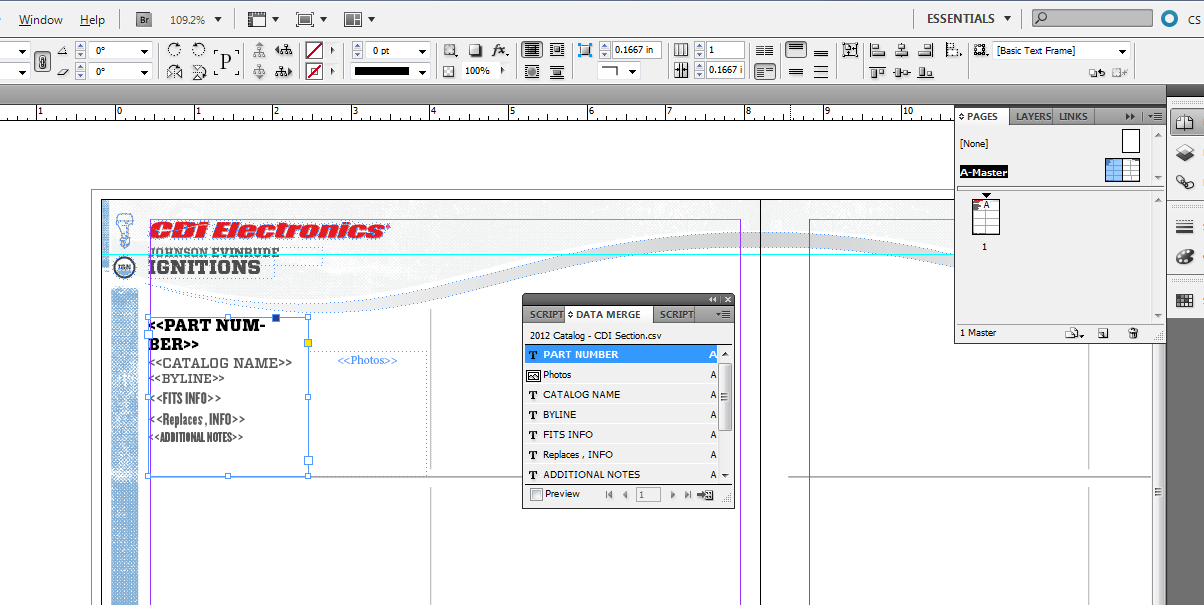

If the body of your letter has areas in it that will be merged with the data, like a donation amount for donor letters, be aware that the length of the information you are merging can fluctuate and cause your text to reflow. Design your letter appropriately marking the areas that will include data from the merge with designations like > and > so you can replace them with the merged data.

If your letter is two sided, create a two page 8.5x11 document. Step 3: Set Up Your InDesign FileĬreate your form letter as an 8.5x11 page. This will generate a document that has each piece of data separated by a comma or tab depending on the format you save it as. Once you have all the rows and columns adjusted, you need to save the Excel spreadsheet as a comma-delimited file (.csv) or a tab-delimited (.txt) file. You will most likely want your envelope to have the mailing name and address in all caps, but on the form letter you will want the salutation to be in upper and lower case. If each row is typed in all caps, then the merged document will be in all caps. When checking your Excel spreadsheet and making sure that all labels and rows are correct, how the data is input into each row is how it will show when you merge the document into InDesign. Row one of your spreadsheet should have the labels for each column be sure that each column has a unique label to keep them separate when merging into InDesign. and rows that have the information for each recipient of the form letter and envelope. The data source file is most commonly an Excel spreadsheet set up with columns that have the designated labels for name, salutation, address, etc. Using the same data source file, we can create both the letter and envelope easily. For this example, we will look at an Excel spreadsheet that contains information that needs to be used to create a form letter and envelopes. Data merge is commonly used for form letters, addresses on envelopes, mailing labels and can even be used for numbering. What Does Data Merge Do?ĭata merge allows you to take an Excel Spreadsheet, with rows and columns of data, and merge those fields into their assigned places in InDesign.
Indesign excel data merge how to#
semicolon or tab) instead of a comma, so you may need to adjust the settings accordingly.In this installment of Learning Adobe InDesign, we take a look at data merge (also known as a mail merge) and how to set up your InDesign document. It’s worth noting that some CSV files may use a different delimiter (e.g.Using Python: you can use Python’s built-in ‘csv’ module to read and decode a CSV file. The file will be displayed as plain text, with each line representing a row and each field (column) separated by a comma. Using a text editor: You can also open a CSV file in a text editor, such as Notepad or Sublime Text. Simply double-click the CSV file or open it in the program and it will be automatically imported and formatted into a spreadsheet. Using a spreadsheet program: Many spreadsheet programs, such as Microsoft Excel or Google Sheets, can open and display CSV files by default. There are several ways to decode a CSV file, depending on the specific program or tool you are using. Please note that, depending on the format and contents of your file, some of these options may not be appropriate. For example, you can use Python’s Pandas library to read the CSV file and then use the Google Translate API to translate the contents. You can use a script or program to automate the translation process. This can be done by uploading the file to the service or by copying and pasting the contents of the file into the service’s web interface. You can use an online translation service, such as Google Translate, to translate the contents of the CSV file.
Indesign excel data merge professional#
These programs are designed for professional translators and offer advanced features like translation memory and terminology management. You can use a specialized translation software, such as SDL Trados or MemoQ, to translate the CSV file. Using a spreadsheet program like Microsoft Excel or Google Sheets, you can manually translate the contents of the CSV file by opening it in the program and then using the built-in translation tools. There are several ways to translate a CSV file into another language:


 0 kommentar(er)
0 kommentar(er)
